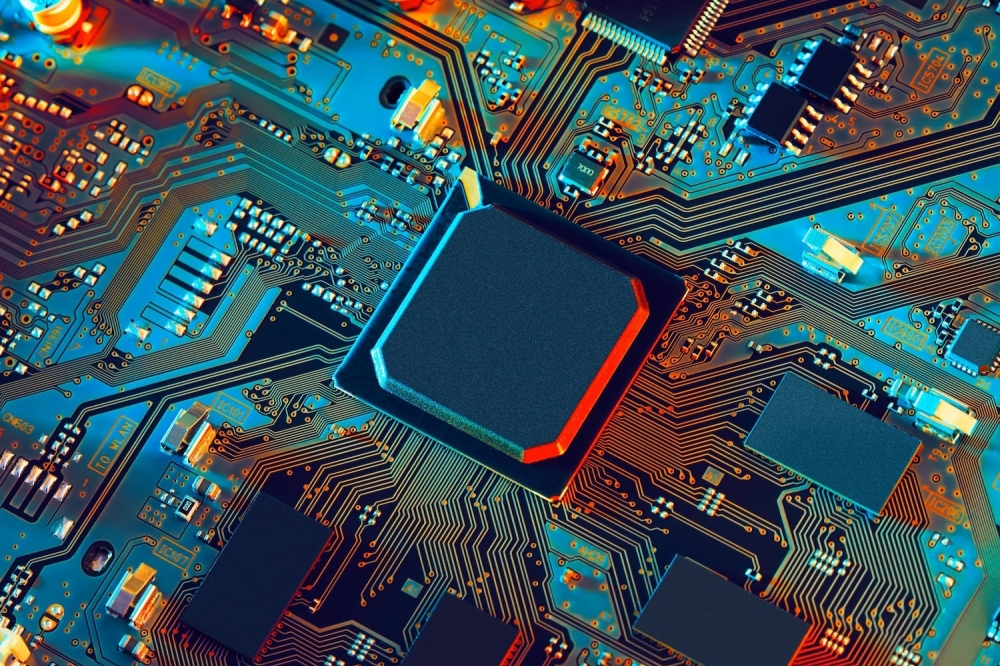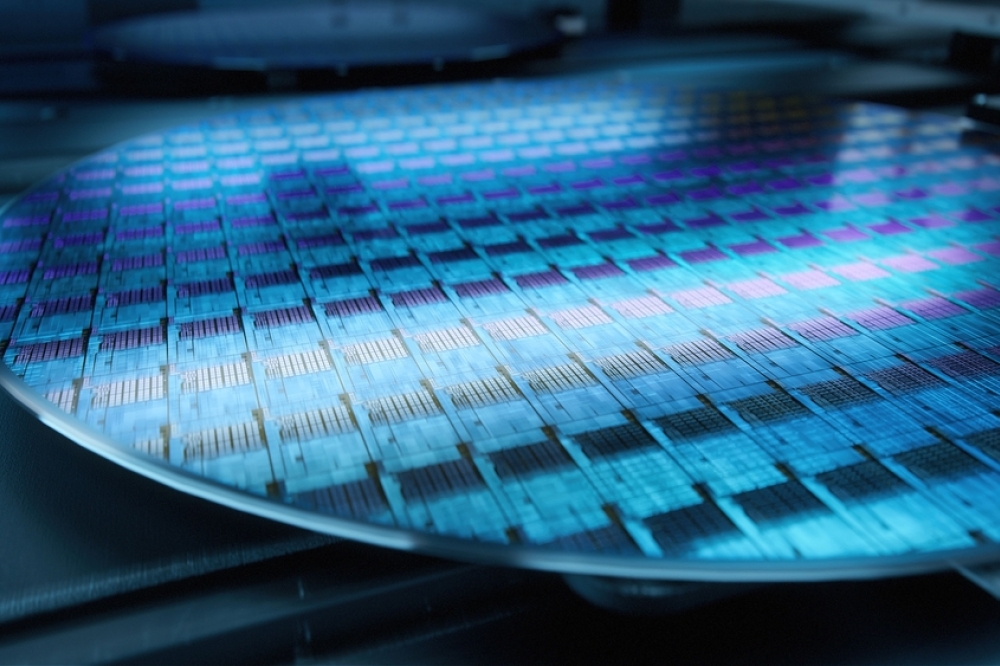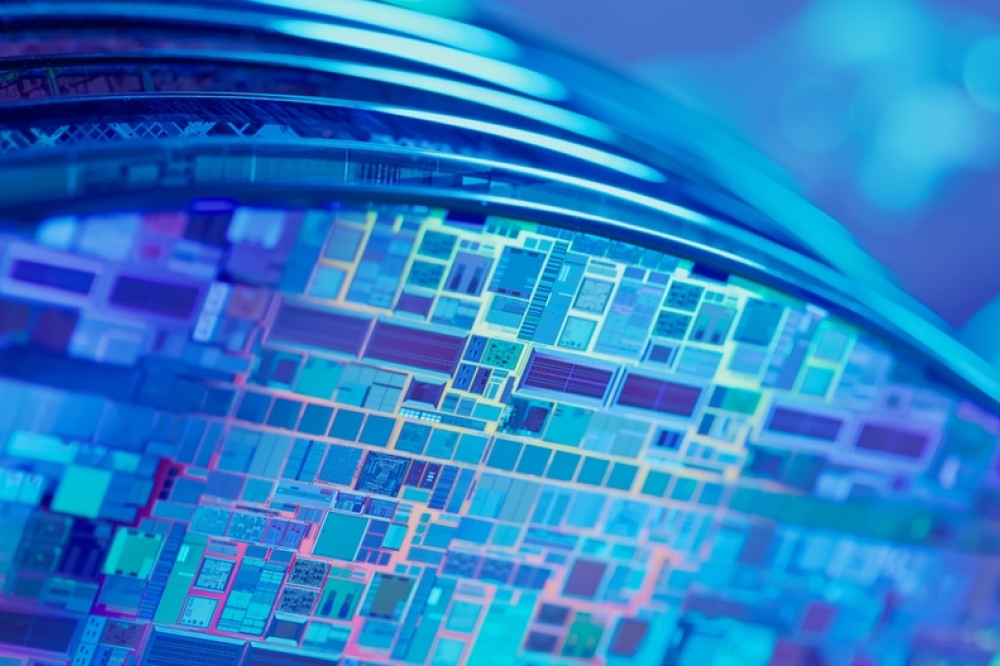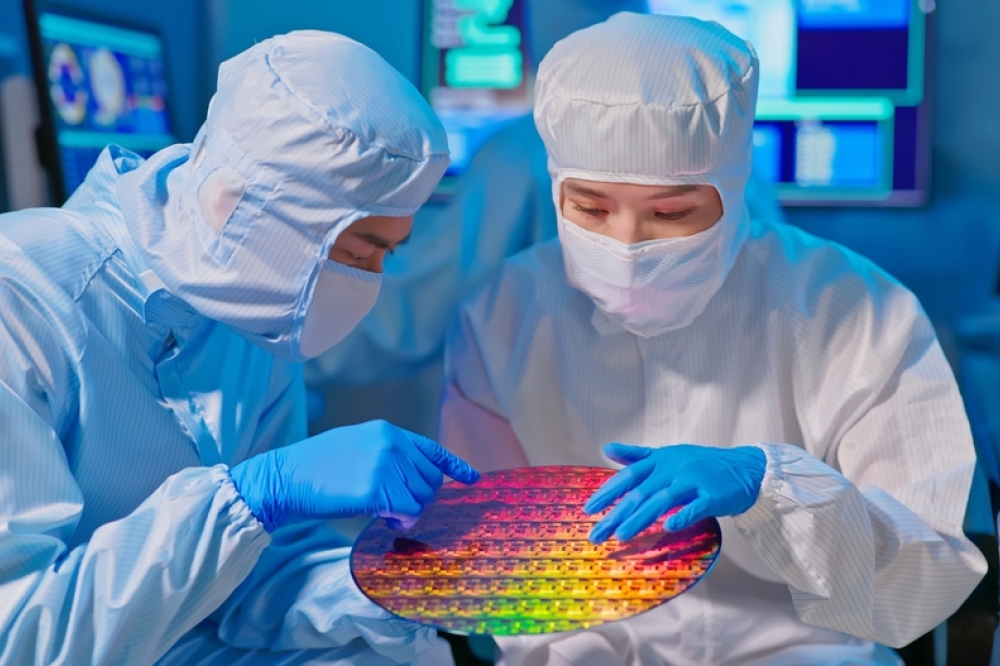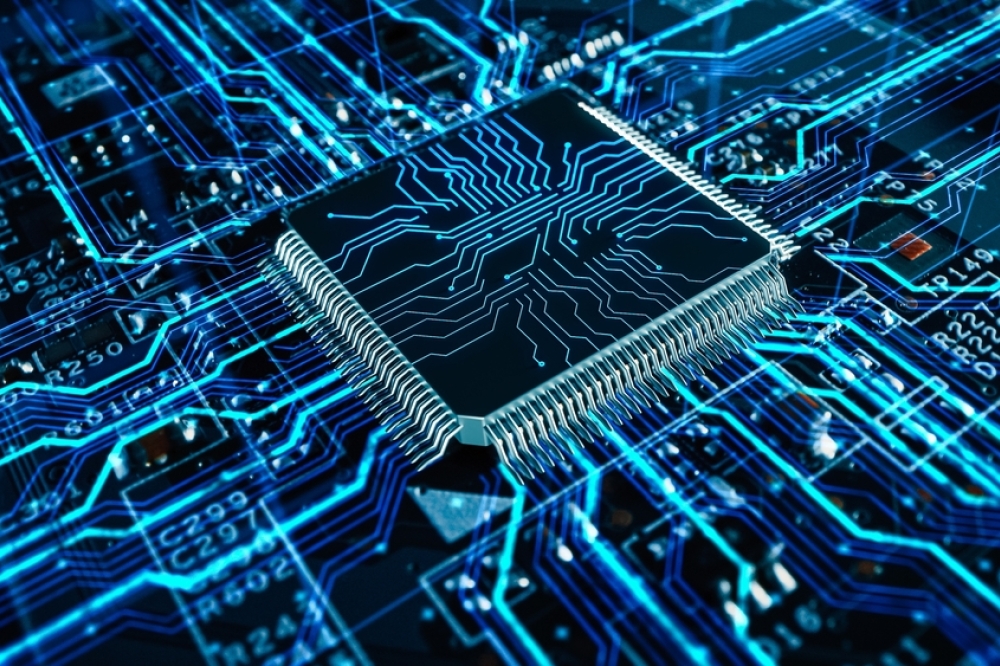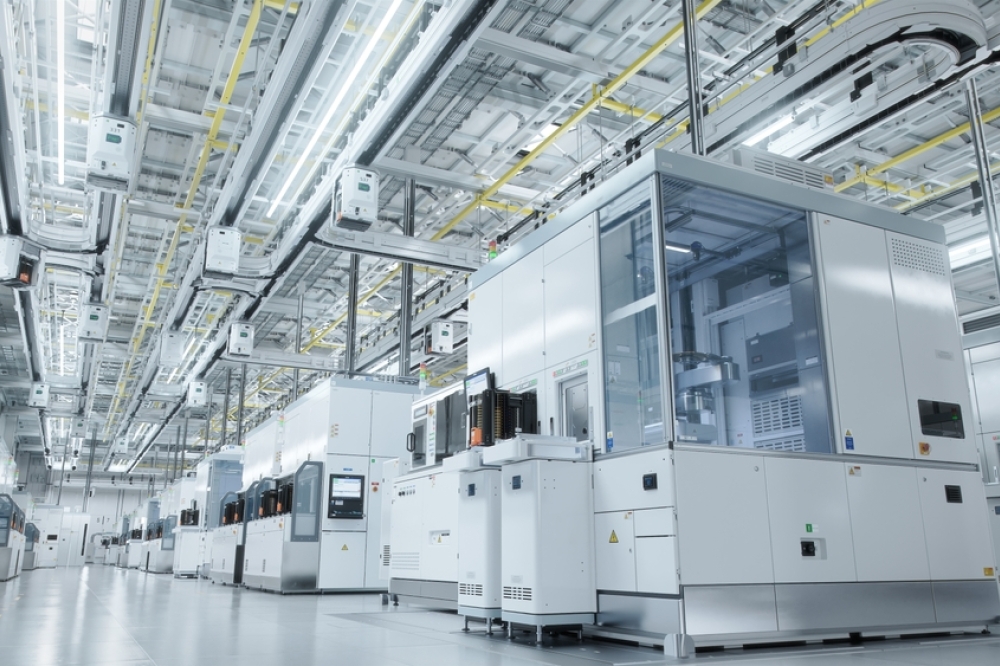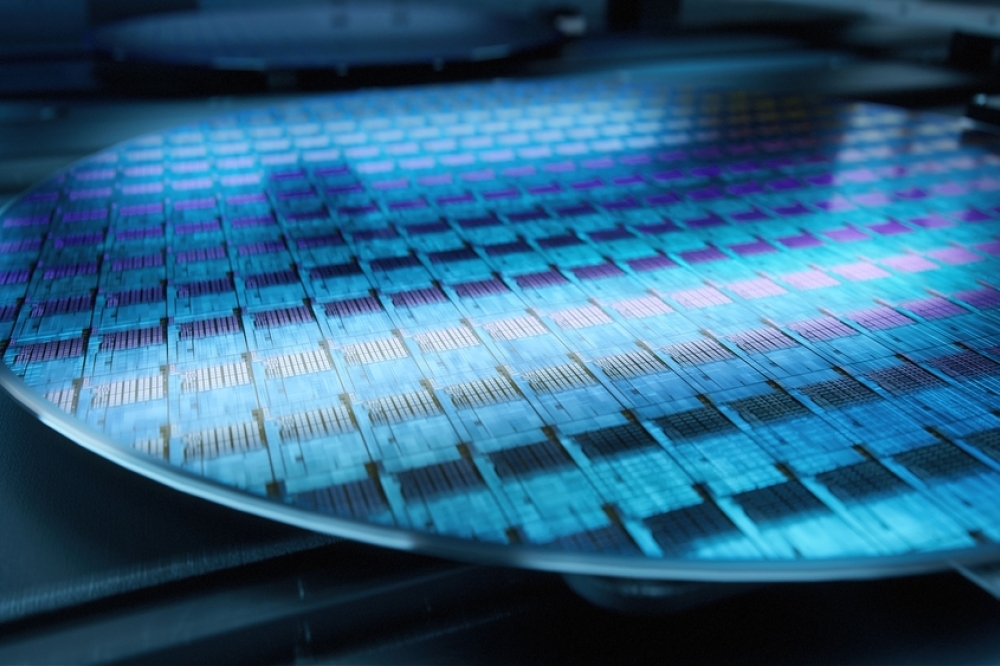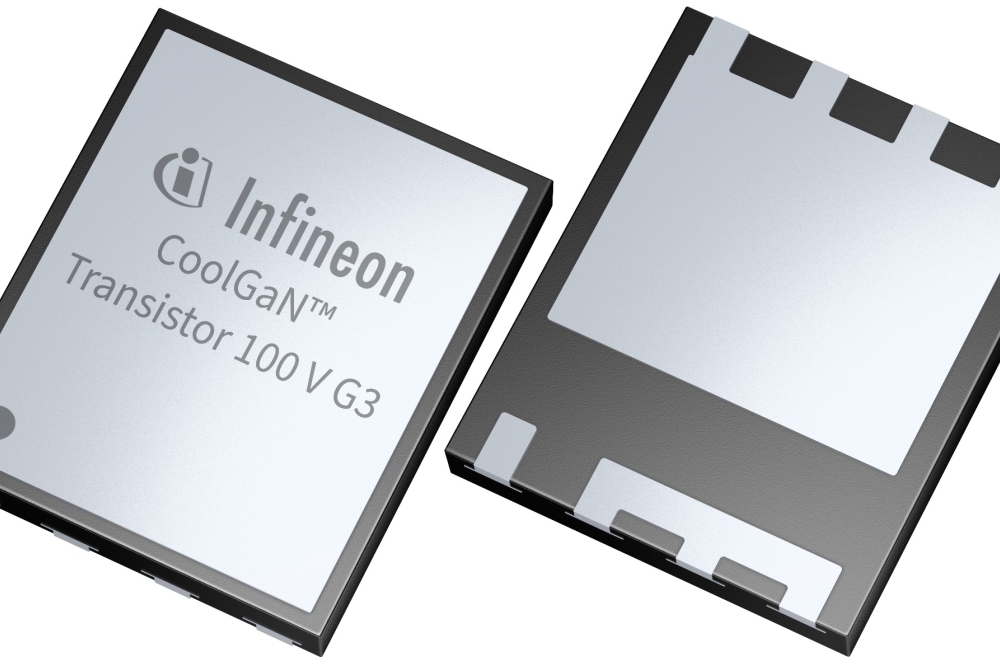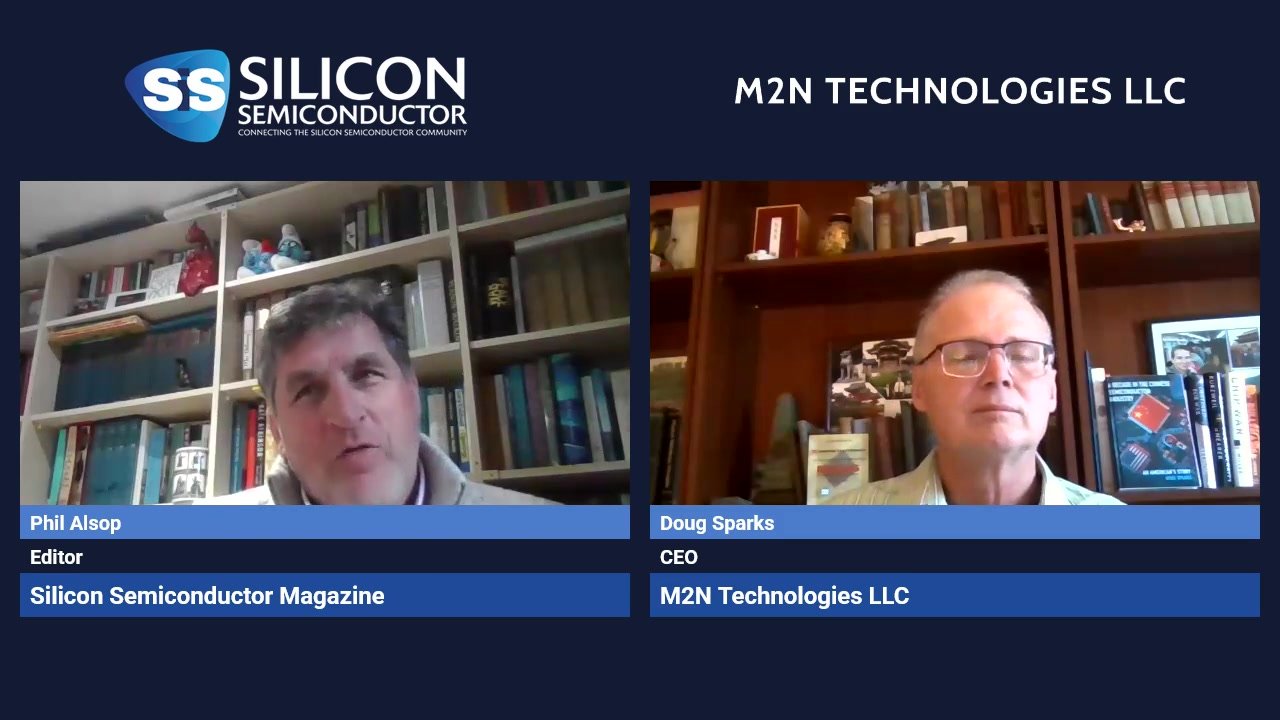Avoid hydrogen shortages with on-site generation
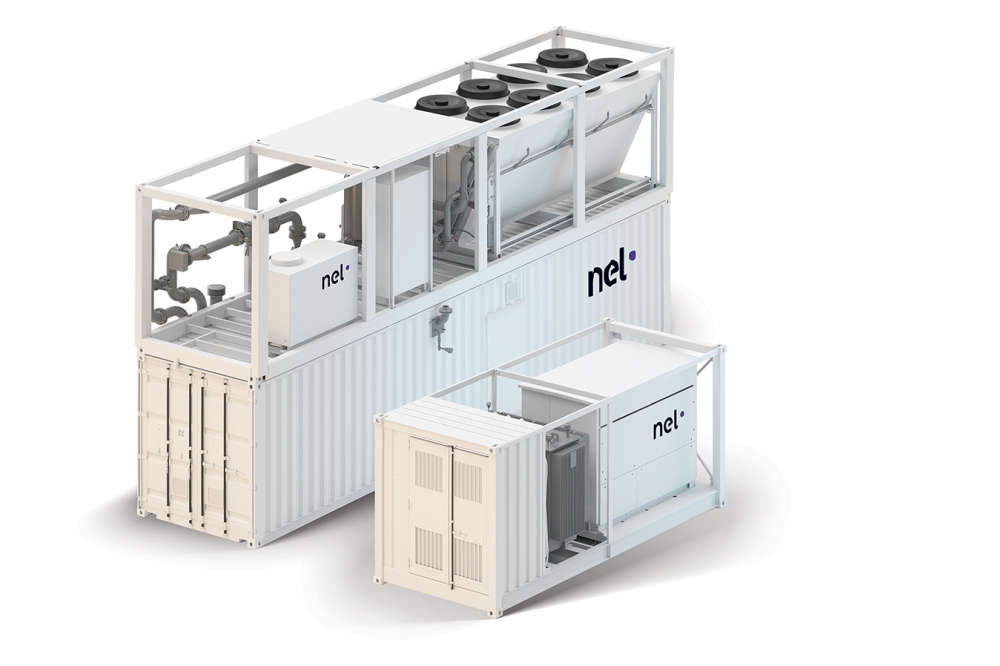
A steady supply
of high-purity hydrogen is critical to semiconductor fabrication. Recent
post-pandemic supply chain interruptions have challenged manufacturers,
leading to production stoppages. On-site hydrogen generation offers a
scalable alternative for new and existing fabs, eliminating the need for
hydrogen storage, and freeing the operator from dependence on gas
delivery.
BY LYNN GORMAN, FREELANCE TECHNICAL WRITER
READERS OF SILICON SEMICONDUCTOR understand the critical role that hydrogen plays in semiconductor fabrication. Hydrogen facilitates crystal growth, wafer annealing, acts as a carrier gas and is important in the growing use of extreme ultraviolet (EUV) lithography at 7nm nodes and below. As the need for semiconductors vastly grows across all sectors of world economies, so does the need for hydrogen. The semiconductor industry is aware that supply challenges are damaging the production rates of cars, appliances, and myriad electronic devices. Simultaneously, the hydrogen market is facing its own trials.
Besides semiconductor manufacturers, other traditional consumers of hydrogen include chemical producers, hydrogenated fats and oil manufacturers, glass makers, metal fabricators, refineries, and thermal power stations. There are also newer applications for hydrogen that are putting a strain on supply. In the last decade, fuel cell forklifts have evolved from being non-existent to becoming the world’s largest single application for liquid hydrogen. Another example of hydrogen’s expanding industrial role is under trial right now: the use of hydrogen to fuel 18-wheel freight haulers, making short- and long-haul truck transport potentially the next major growth area for hydrogen fuel. If the trucking sector adopts hydrogen fuel, that demand will be hundreds-fold larger than the forklift market.
As diesel fuel and gasoline rise in price and emissions laws tighten, hydrogen fuel will become increasingly attractive for transport. Even the need for hydrogen for space flight is growing with the rise of private space companies that are sending satellites into orbit at a faster rate than ever before; NASA’s ambitious planned return to manned space flight missions to the moon and beyond will only grow consumption.
“Closer to the semiconductor world, the return and expansion of semiconductor manufacturing in the United States will introduce more pressure on the liquid hydrogen supply, including the new entry of extreme UV lithography,” said David Wolff, Regional Manager at Nel Hydrogen. “The EUV trend alone will more than double the use of hydrogen in each of the largest and most sophisticated fabs.”
In addition to the disruption in global supply chains due to the pandemic along with more demand for hydrogen by multiple major consumers, there is another key reason why the production of hydrogen is taking a hit. Liquid hydrogen in the past was most often made from off-gas streams such as byproducts from chlorine/caustic chemical plants and from petroleum refining; this source met most past needs. But the availability of off-gas hydrogen has declined considerably in recent years. To supply high quality hydrogen, industrial gas companies would typically buy excess hydrogen and then purify, liquify, and verify it for quality. They would then distribute by tanker trucks directly to customers or through terminals. Part of that hydrogen would be turned from liquid to gas for delivery in cylinders. Unfortunately, the availability of low-cost, raw gas hydrogen is dropping. Industrial scale operations producing low-cost raw gas hydrogen are starting to shut down due to environmental pressures.
There are three ways to generate hydrogen on site that are amenable to
semiconductor operations: steam methane reforming, alkaline
electrolysis, and proton exchange membrane (PEM) electrolysis.
In some cases, they are shifting capacity to other parts of the world with looser regulations. In other cases, the plants are closing and not being replaced because the end use applications for their primary products are disappearing permanently from the areas where they are located. A good example of this are chlorine/caustic chemical plants serving paper and PVC plastic markets.
This multi-faceted convergence of factors impacting how hydrogen is produced and in what quantities is affecting both the semiconductor market and the supply of delivered hydrogen. The confluence of increased demand and reduced supply is creating such a conundrum that generating hydrogen on-site is becoming a compelling and practical consideration at semiconductor fabs of all sizes, capacities, and specialties. Certain commodity, specialty, and compound semiconductor fabs are already using on-site generated hydrogen due to its economy, space efficiency, and as a means to lower risks associated with delivered hydrogen that is subject to supply interruptions.
Extreme UV Lithography, or EUV, more than doubles a fab’s hydrogen consumption. EUV is a critical process step in the manufacture of next-generation ICs and is already being utilized by major manufacturers to produce advanced node devices. However, EUV deployment requires significant capital investments both for the EUV equipment itself and for the support of that equipment, including consumables. That support infrastructure includes hydrogen, which maintains the extremely important optical clarity EUV requires. Fabs utilizing EUV systems must either provide hydrogen at the point of use with on-site generated hydrogen, or it will have to be piped throughout the fab to reach the EUV process tool location. EUV systems are also very large—typically requiring a fab expansion or sizeable remodeling to accommodate requirements. On-site hydrogen generators can be setup alongside EUV systems, completely eliminating the need to pipe-in hydrogen and the costly infrastructure expansion needed to support a new EUV system.
“Among on-site technologies to create hydrogen suitable for semiconductor applications, there are three that are amenable to semiconductor operations,” said Wolff.
On-site hydrogen generation offers a highly simple supply chain depending only on water and electricity at a facility.
One way to generate hydrogen, albeit to a small degree according to Wolff, is via steam methane reforming. In steam methane reforming natural gas is stripped of its hydrogen constituents and that hydrogen is subsequently purified for semiconductor use. A steam methane reformer is most suitable for medium to large facilities. It emits large quantities of carbon dioxide (CO2) – a major greenhouse gas, so there are emissions regulations surrounding its use. But more importantly from an IC manufacturing standpoint, steam methane reforming produces inherently low purity hydrogen that demands further processing to be pure enough for semiconductor manufacture.
The second and third ways to generate hydrogen on-site are to use alkaline electrolysis or proton exchange membrane (PEM) electrolysis. Both techniques split apart water molecules to yield hydrogen without a CO2 byproduct. They emit only oxygen and are therefore not subject to the same emissions controls and regulations as is steam reforming. Of the two, alkaline electrolysis is the older technology and yields hydrogen of medium purity; it can be refined further until it reaches semiconductor-level purity, but this process requires an additional mechanical compression step. PEM electrolysis can provide hydrogen from the smallest to the largest semiconductor facility because the equipment is made in a wide variety of sizes and designed to be expandable as needs grow, making expansion more cost-effective. A PEM generator uses only water and outputs hydrogen at a very high purity level without requiring subsequent mechanical compression.
At present, semiconductor manufacturers typically buy extremely pure hydrogen and then purify it even more at the point of use (POU). In the past, palladium filter purifiers were widely used, but they were expensive to buy and subject to catastrophic failure under some process conditions. Palladium purification has been augmented and to some degree replaced using selective impurity removal devices called ‘getters.’ One of the features of PEM electrolysis is that it provides hydrogen which is at sufficient pressure to use with any type of purification method. Systems designed by Nel Hydrogen, for example, make hydrogen at 435 PSI (30 bar) with 99.9995 or 99.9998% purity, which is at sufficient pressure to use with any point of use purification device. The PEM process delivers extremely high purity hydrogen, any measurable contaminants are readily identified by Nel’s system: oxygen, nitrogen, and water. If any of these exceed the limits for a particular IC manufacturing requirement, they can be removed with dedicated getter devices.
A multi-faceted convergence of factors is affecting the semiconductor
market and the delivered hydrogen supply. Certain commodity, specialty,
and compound fabs are already using on site generated hydrogen for its
economy, its space efficiency, and lowering the risk factor of relying
on supply disruptions affecting delivered hydrogen.
“Practically speaking, most semiconductor fabs may take a hybrid approach to hydrogen generation,” said Wolff. “For example, there may be those that already have liquid supply tanks, and hydrogen stored in those might be considered as reserves, but not necessarily for the facility’s baseload supply. The day-to-day requirements for hydrogen would be generated without increasing the area required for hydrogen storage. Hydrogen storage takes up a large footprint on a company’s property because of the safety clearance requirements around the highly hazardous hydrogen tanks.”
Advantages that on-site PEM hydrogen generation provide for semiconductor manufacturers include no hydrogen storage; hydrogen generation that is ultra-pure and extremely dry. Having an on-site generator plant readily accommodates the ups and downs of production cycles with zero inventory. As plants expand, on-site generators also minimize new hydrogen piping and what is almost certainly a considerable disruption of plant operations needed to accommodate construction; this is especially important to new and expanding facilities. Electrolysis equipment for on-site generation is also portable; companies can take it with them if they move or reconfigure a plant’s layout.
On-site hydrogen generation does require an investment of capital for the electrolysers, but that capital may be less than other approaches to hydrogen supply. It will almost certainly be less expensive than building another gas farm. Further, typical capital equipment and construction savings can provide a quick return on the operator’s investment.
Proton exchange membrane (PEM) electrolysis uses only water and outputs
hydrogen at a very high purity level without requiring subsequent
mechanical compression.
“One of the attractive factors in electrolysis is its simple cost structure,” explained Wolff. “Essentially the fixed cost is the cost of the hydrogen generator, and the variable costs are the electricity, the water to feed it, and a very small contribution from maintenance. Depending on the scale of the equipment, the fixed cost of hydrogen generation is anywhere from $4 per 100 cubic feet of hydrogen supplies down to about $1 per 100 cubic feet for the largest scale equipment. The larger the scale the greater the economy.”
From a variable cost basis, the biggest factor is the cost of electricity and one of the fortunate things for a fabrication facility, especially those that are new or expanding, is that they often receive very low-cost energy arrangements that are typically underwritten by governmental agencies seeking to bring new industry to their areas. In situations where low-cost energy serves a site this can also contribute to lower cost hydrogen. In some plants around the world, green electricity is also in play. On average it takes 15 kilowatt hours to make 100 cubic feet of hydrogen. If the electricity cost is 6 cents per kilowatt hour, that means it costs 90 cents in electricity per 100 cubic feet of hydrogen produced. If there’s a $1 fixed (capital) cost per 100 cubic feet of hydrogen produced in a large semiconductor fab plus the 90 cents variable and a couple of pennies for maintenance, that equates to hydrogen costing under $2 per 100 cubic feet, delivered at the purity and pressure that’s required.
“If more capacity is required, multiple unitized systems can meet growing needs so fabs can add capacity in blocks of up to 30 normal meters cubed per hour (Nm3/h) or fabs can step up to Nel’s containerized systems to be installed outdoors,” continued Wolff. “These start at 250 Nm3/h of ultra-pure hydrogen. Importantly, containerized systems do not require the excessive land area which would be required for a larger liquid hydrogen tank. These units will make up to a ton a day or 20,000 cubic feet per hour of hydrogen supply.”
Nel Hydrogen has been ramping up its manufacture of both alkaline and PEM electrolyser equipment, readying themselves for demand from semiconductor manufacturers and other markets. The company has been making electrolysers for nearly 100 years and has delivered over 3,500 units that are used in over 80 countries. Considering today’s labor shortages, many fab managers may wonder who will operate this new hydrogen generating equipment, and what level of specialized training might be required for daily operation.
“There are a few scenarios in practice today,” reported Wolff. “Perhaps the most beneficial is the fact that electrolysers can be easily operated and maintained by current fab personnel because they take a minimal amount of attention and training. In some facilities, it’s operated by the current supplier of delivered hydrogen. Some industrial gas and utility companies have field service personnel who can operate and maintain electrolysers at customer sites. There are also private companies getting established in certain geographical areas that are specializing in the operation and servicing of electrolysers, comparable to current water treatment and compressed air service company models.”
Hydrogen supply chains can be complex, or they can be simple. On-site hydrogen generation offers a highly simple supply chain depending only on water and electricity at a facility. Using PEM water electrolysis is a highly efficient means to provide semiconductor fabs with ultra-pure hydrogen to improve safety, quality, and productivity. It helps ensure production quantities of hydrogen will be available even as traditional methods of delivery are struggling to achieve pre-pandemic levels of efficiency. Further, as we can all appreciate at a time when chip shortages make daily media headlines, maximizing production uptime is more important today than ever before.



